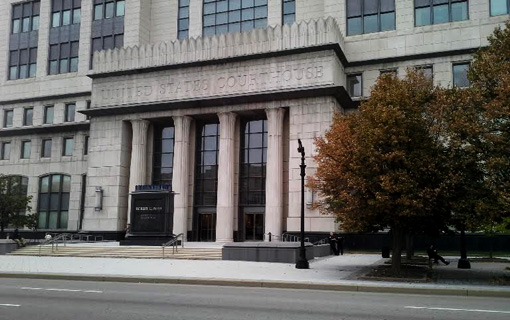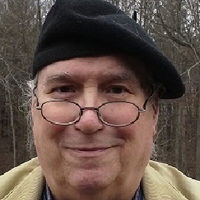
CHARLESTON, W.Va. – Don Blankenship, the accused coal criminal and former CEO of Massey’s Upper Big Branch Mine, may finally face justice this month. His trial began here Oct. 1 in the U.S. District Court.
The defendant arrived in an SUV and was quickly escorted into the main courtroom by Homeland Security. Some 300 prospective jurors had filled the courtroom where the trial is to take place.
The media and members of the families of the 29 miners who were killed had to watch the proceedings from an overflow courtroom on several widescreen TVs.
None of the families were happy about being shunted off into an overflow courtroom. They and the reporters had to endure watching at least four days of inaudible bench conferences.
The first few days were spent with jury selection, which continued through Tuesday of the following week. Dismissed prospective jurors were excused for a wide range of reasons including stating that they believed Blankenship was being made a scapegoat for the explosion, expressing sympathy for the miners’ families, having a business connection with Blankenship or his lawyers, or knowing a member of a deceased miner’s immediate family members.
The trial proper began with the lawyers’ opening statements on Wed., Oct. 7. The entire trial is expected to last from four to six weeks. There was at least one happy thing about the first days of watching seemingly endless, muted bench conferences between Judge Irene Berger, the lawyers, and prospective jurors. Most of the family members seemed glad that Donald Blankenship ‘s trial had finally begun and the then-CEO of Massey’s Upper Big Branch mine in Raleigh County may finally have to answer for his alleged negligence, cover-ups, fraud, and the other charges levied against him.
Judge Berger finally unsealed the main courtroom after a jury of 11 women and four men had been selected and sworn in. The trial proper began with the Prosecution’s and the Defense’s opening statements late Wednesday morning.
Blankenship faces three felony counts, which were modified from four by combining the original four counts into three. He still faces the same maximum of over 30 years in prison for the three counts as he did for the four counts. The charges he now faces are: conspiracy to violate mine safety standards, impairing government inspectors by covering up hazards to the miners’ safety, and making false statements to securities regulators that essentially resulted in securities fraud.
Assistant U.S. Attorney Steve Ruby began the government’s opening statement by telling the jury how Blankenship pushed ever harder for increased coal production, personally controlled every move at the mine and endorsed violations that allowed conditions to deteriorate. Ruby asserted that Blankenship had orchestrated a cover-up of safety hazards as he pushed for increased coal production until the mine blew up on April 5, 2010, killing 29 miners in the worst West Virginia mining disaster in four decades.
Ruby stated that the government would bring forth miners and phone recordings that will show how Blankenship put production, profits, and personal wealth above the miners’ safety. He wrapped up his opening statement by claiming that Blankenship’s actions at the mine were motivated simply by money.
In his opening statement Bill Taylor, lead defense counsel, began by telling the jury that Don Blankenship is not charged with causing the explosion. He cautioned the jury against finding Blankenship guilty simply because he is a “wealthy coal company CEO.” He told the jury to ask themselves whether Blankenship is on trial because of what he did or because of “who he is?”
Taylor blamed many of the citations on the U.S. Mine Safety and Health Administration’s [MSHA] “improper” changes forced on the mine. He went on to claim that Blankenship was a “safety innovator” who put in place a program to force Massey’s employees to improve their safety performance and claimed that Blankenship believed that, “if people do their jobs, … you don’t have citations.” Taylor used the time-worn conservative argument that any mine safety problem lay “with people not doing their jobs.”
Photo: John Milam/PW












Comments